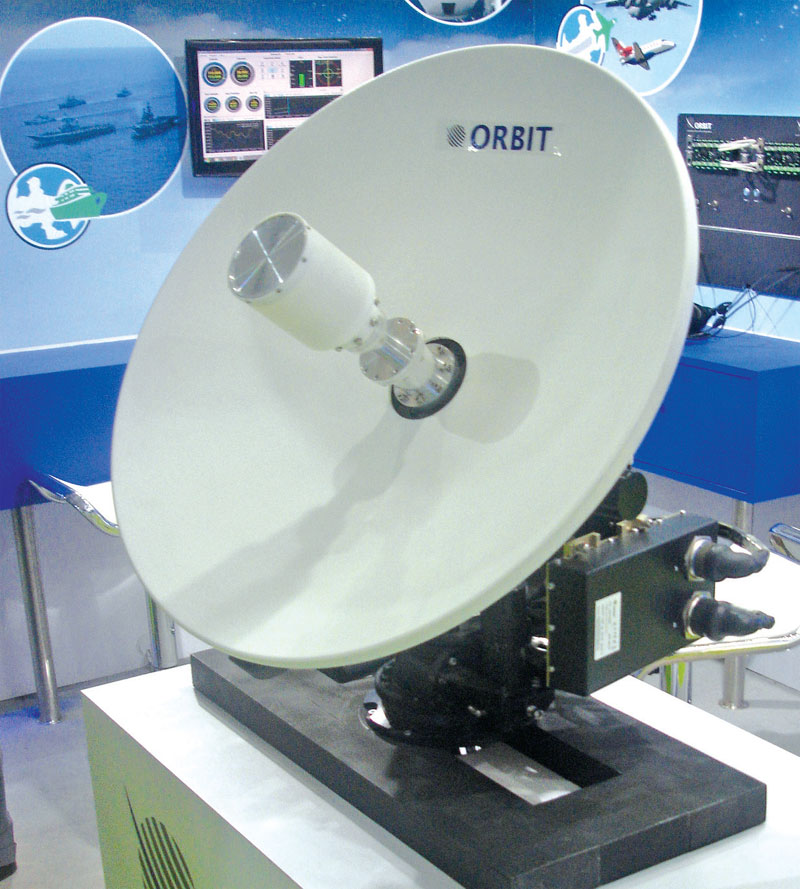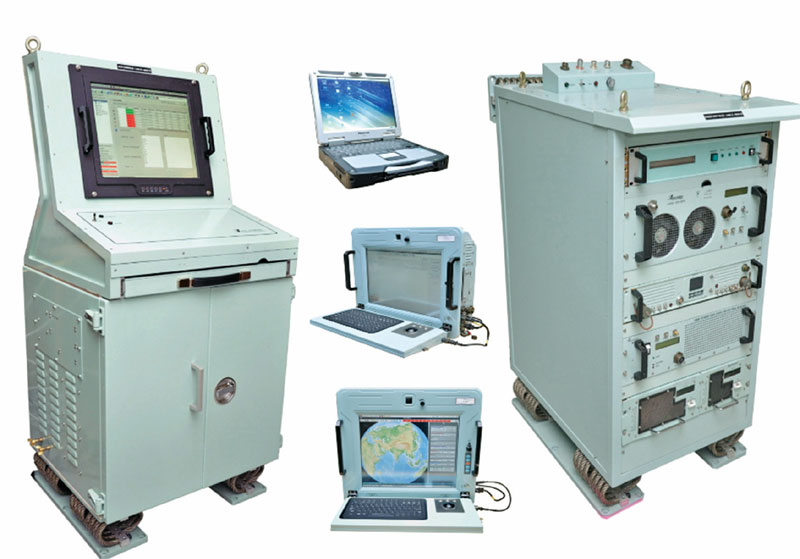The effective use of joint forces’ airpower can be reinforced through common data-links
Prasun K. Sengupta
Back in the previous decade, the world got its first-ever demonstration of joint forces network-centric warfare (NCW) operations. This was the first time that new-generation common data-links were put to use during Op Iraqi Freedom (OIF) to ensure inter-operability, create common operational battlespace pictures, and increase situational awareness to hitherto unprecedented levels.

Closing the sensor-to-shooter loops with precision and rapidity differentiated OIF from the German ‘Blitzkrieg’ aerospace-air-land coordination. The various OIF campaigns were precise because all objects were digitised and de-conflicted before an engagement. This was a result of real-time blue and red force tracking through a myriad of sensors integrated using near real-time ODLs. The sensor-to-shooter loops were shorter because the sensors and shooters were tightly integrated through a series of stacked data-links in many cases. A combination of video imagery feeds, situational awareness updates and command-and-control data-links created a real-time collaboration environment for prosecuting all the war-fighting operations in which the environment was highly localised and supported a few nodes (for a sensor-to-shooter system), reflecting a near-optimal pairing of sensors and weapons to target.
In effect, airpower was reinforced; the integration of a myriad of sensors, intelligence analysts, planners and decision-makers using data-links reinforced the effective use of joint forces (army, navy and air force) airpower.
The various types of data-links using Time-Division Multiple Access (TDMA) techniques that were employed during OIF included:
- Common data-links (CDL): Used for down linking sensor information to the ground control stations of command-and-control nodes. They were used to support the exchange and fusion of intelligence, surveillance, reconnaissance (ISR) information and employed mainly by manned ISR platforms.
- Tactical common data-links (TCDL): A part of the CDL family, it was used to equip unmanned aerial platforms (UAS) that were utilised for ISR applications.
- Link-16: Is the US Department of Defense’s primary tactical data information Link (TADIL) based on J-series messages for airborne battle management. It was used for exchanging command-and-control messages between various manned and unmanned aerial platforms, i.e., surveillance tracks, electronic warfare, weapons coordination, etc. It supported a wide area of operations within a 300nm diameter.
- The enhanced position location reporting system (EPLRS)/situational awareness data-link (SADL): It complemented Link 16 by providing the ground situational awareness picture. Aircraft equipped with SADL also share air surveillance tracks and command-and-control information updates.
- Video data-links: Provided information/video downlinks from UAS and target-designation pods carried by combat aircraft to specific joint tactical air-control (JTAC) centres and/or special operations forces (SOF) with specially encrypted transceivers.
Of these five data-links, the EPLRS played an important role when unleashing fire-assaults (via both ground-based artillery and manned/unmanned aerial platforms) because it was able to display the five closest friendly units within proximity, regardless of the target position. This was critical as the Blue Force Tracker (BFT) provided a non-real-time update of Blue Forces’ position, with refreshes occurring approximately every five to 10 minutes. The information from BFT could not be used to gauge the accurate position of a unit to avoid fratricides. The video downlinks from UAS and target designation pods gave JTACs and SOF units a positive identification of a target. It also enabled the JTACs and SOF units to guide shooters like combat aircraft to the targets. Battle damage assessment (BDA) through the video downlinks was also instantaneous, enabling a faster decision to re-strike if necessary. While EPLRS and video data-links provided the capability for precise and rapid decentralised execution, the suite of CDLs, TCDLs and Link-16 provided the means for integrating intelligence with command-and-control nodes, enabling centralised control and the efficient allocation of resources, such as weapons and sensors to target pairing. Such an increase in the sophistication of data-links enabled integration and operational effectiveness.
However, it came with a price. During World War II, the Germans had relied mainly on HF radios for communications. This entailed the same frequency and waveform operations. The advantage was greater manageability and unquestioned inter-operability across air-land elements. OIF used different types of data-links. Consequently, for inter-operability, ‘gateways’ were required. For example, integrating Link-16 and EPLRS/SADL required the Transparent Multi-Platform Gateway (TMPG). The TMPG translated Link-16 TADIL-J messages to SADL-type messages. The different types of data-links have thus created a situation where gateways have now become a necessity. The gateways can be deployed on various types of ground-based, naval and airborne platforms. The manageability, mobility, persistence and survivability of these platforms have to be factored into the mission equations for success.
Recognising the problem, the US has since embarked on fielding the joint tactical radio system (JTRS), a software-defined radio (SDR) which uses the wideband networking waveform (WNW) technique for harmonising joint services usage of this technology. Any radio system wirelessly transmits/ receives signals in the radio frequency (RF) spectrum to facilitate the transfer of information. The SDR is a very special kind of system in which the physical layer functions are defined as software functionality, i.e., a software code executes the role of a circuit board of the conventional radio and software-based filtering algorithms are used for frequency selection. The software generates the communications signal waveform, which is equivalent to a modulated signal, making SDR capable of communicating over a large portion of the spectrum whilst supporting multiple protocols. These software algorithms are downloadable and adaptable over the lifespan of the hardware. Thus, the SDR is a multi-mode, multi-band and multi-functional radio requiring only a software upgrade for improvements, whereas traditional hardware-based radios have cross-functionality limitations and can only be modified through physical changes.
Another real force-multiplier that enhances battlespace situational awareness by generating and disseminating a common operational picture and improving the management of all linked command-and-control/ISR networks is the versatile, modular and scalable, multi-data-link processor (DLP) that can be configured/customised as required by the end-user. When integrated with the CDL, the DLP, the result is a network-centric suite that enables a seamless, configurable and expandable integration of data-links on naval, ground-based and airborne platforms. The DLP-CDL combination can thus be connected through an agnostic interface to multiple hosts like land-based, shipborne and airborne command-and-control centres in a way that facilitates network integration, as well as future upgrades and maintenance requirements over time, thus reducing costs and risk.

The definition and design of any data-link architecture has to capture a wider spectrum of operational contexts, functions and processes. It has also to be synchronised across different services or units to achieve a degree of integration and operational effectiveness. For example, an air-strike should not result in fratricide and should not slow the advance of ground mechanised units. Instead, the air-strike should reinforce and enhance the mobility of friendly mechanised forces. In order to achieve this, both land and air elements are required to share a common data-link capability. This common capability provides ease of integration of all necessary force elements and enables a shorter war-fighting cycle to be achieved. Thus, the DLP-CDL combination has to be engineered to support a very rich picture of the battlespace and at the same time reduce the synchronisation time of all war-fighting elements.
In India’s case, adoption of the DLP-CDL combination in future will be mandatory if the desired end-state is to achieve joint service war-fighting through the synchronisation of existing standalone networks like the Indian Army’s Army Strategic Operational Information Dissemination System (ASTROIDS) and its subordinate Command Information and Decision support system (CIDSS), the Indian Navy’s multi-band LINK-II Mod-3 network, and the Indian Air Force’s Integrated Air Command, Control and Communication System (IACCCS).

